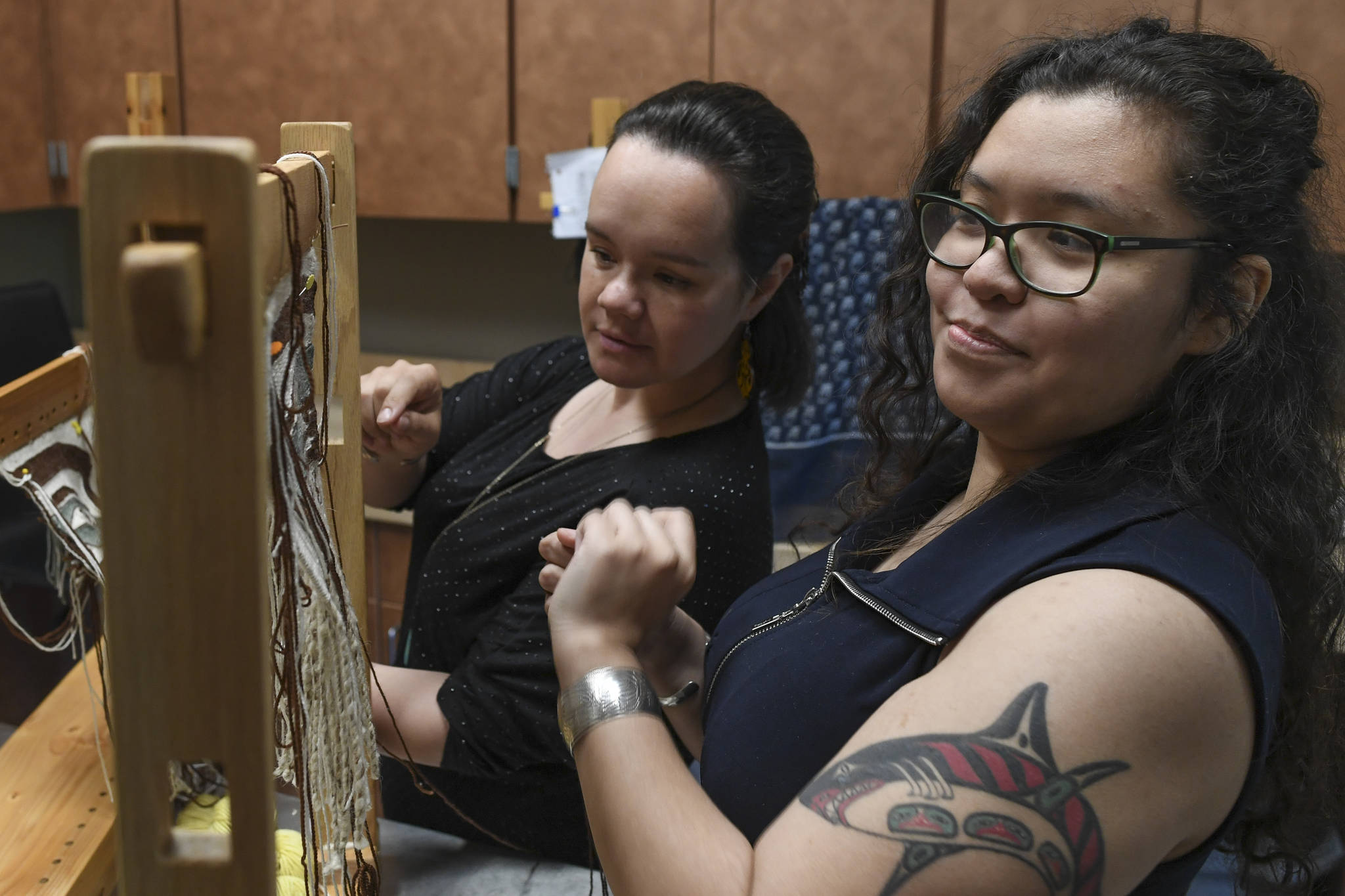A Juneau artist is working to become the fifth person alive who knows how to make an increasingly rare type of traditional clothing.
Tlingit weaver Anastasia Shaawat Kah Gei Hobson-George was recently announced as a winner of a Rasmuson Foundation Individual Artist Award, and she plans to use the $7,500 grant that comes with her project award to learn how to make a sleeved tunic that incorporates two types of indigenous weaving.
Hobson-George and her mentor Lily Hope, an award-winning Tlingit weaver and teacher, told the Capital City Weekly there are only four living weavers alive who know how to make tunics that make use of both Chilkat and Ravenstail weaving. It takes a specialized skill set to make the garmet, with the shoulders of the tunic requiring particular attention, which is why tunic weaving is rare.
“All those four weavers are in their 70s,” said Hobson-George. “It means I could easily be it for tunics, which is why I applied to preserve them.”
[Alaska Native weaving project honors survivors of violence]
Keeping the traditional art form alive is a big responsibility, Hobson-George said, but one that she welcomes.
“It is a cultural weight, but I feel I’ve been prepared to carry that,” she said.
At 21, she is among the youngest to ever win a Rasmuson Foundation Individual Artist Award in the program’s 16-year history. Her limbs are adorned with multiple tattoos, including a vibrant red shark and lotus flower occupying opposite shoulders. Hobson-George said the tattoos represent balancing aspects of her identity: The shark is a reference to her Wooshkeetaan — Shark-Eagle — heritage, and the flower was tattooed shortly after she turned 18 during her first Pride Week. She’s a Southeast Alaska LGBTQ+ Alliance volunteer.
She said her love of weaving goes back to her childhood.
She first tried her hand at it at 11 years old, and it was quickly apparent the art form and artist would be compatible.
“When I was weaving, I could weave for 10 hours and not realize how much time was passing,” Hobson-George said. “There’s something about weaving that clicks in my brain.”
On Wednesday, Hobson-George was working with mentor Hope on a pair of Chilkat leggings in a Sealaska Heritage Institute studio. Hope said she’s pleased her soon-to-be-graduate apprentice will preserve and perpetuate the art form, and that her work was rewarded.
“I’m grateful to the Rasmuson Foundation for recognizing Anastasia’s work,” Hope said. “As a mentor, you only hope your apprentices will be recognized, and Rasmuson is as good as it gets in Alaska.”
Hope wove necklaces that were sent out to this year’s Rasmuson Foundation award winners, and Hobson-George was not allowed to assist because Hope anticipated the younger artist would apply for an award, and they wanted to avoid any appearance of impropriety.
[How Southeast artists put their award money to use]
Hobson-George and Hope have had a mentor-apprentice relationship for the past two years, but it will end soon. Over the past two years, Hobson-George has worked on her craft full-time with Hope and assisted with public presentations as well as the actual work of weaving.
Hope said her apprentice should be able to find professional opportunities and a few things are already booked for this summer.
On May 31, Hobson-George’s partially paid apprenticeship will conclude with a public lunch-hour presentation of Chilkat leggings she and Hope made.
“It does have a bittersweet feeling,” Hobson-George said. “It does end this two-year dynamic that we had. It didn’t feel like it was going to end. It’s been a lot of fun, and we’re like ‘Oh, wait, this is it.’”
• Contact arts and culture reporter Ben Hohenstatt at (907)523-2243 or bhohenstatt@juneauempire.com. Follow him on Twitter at @BenHohenstatt.

